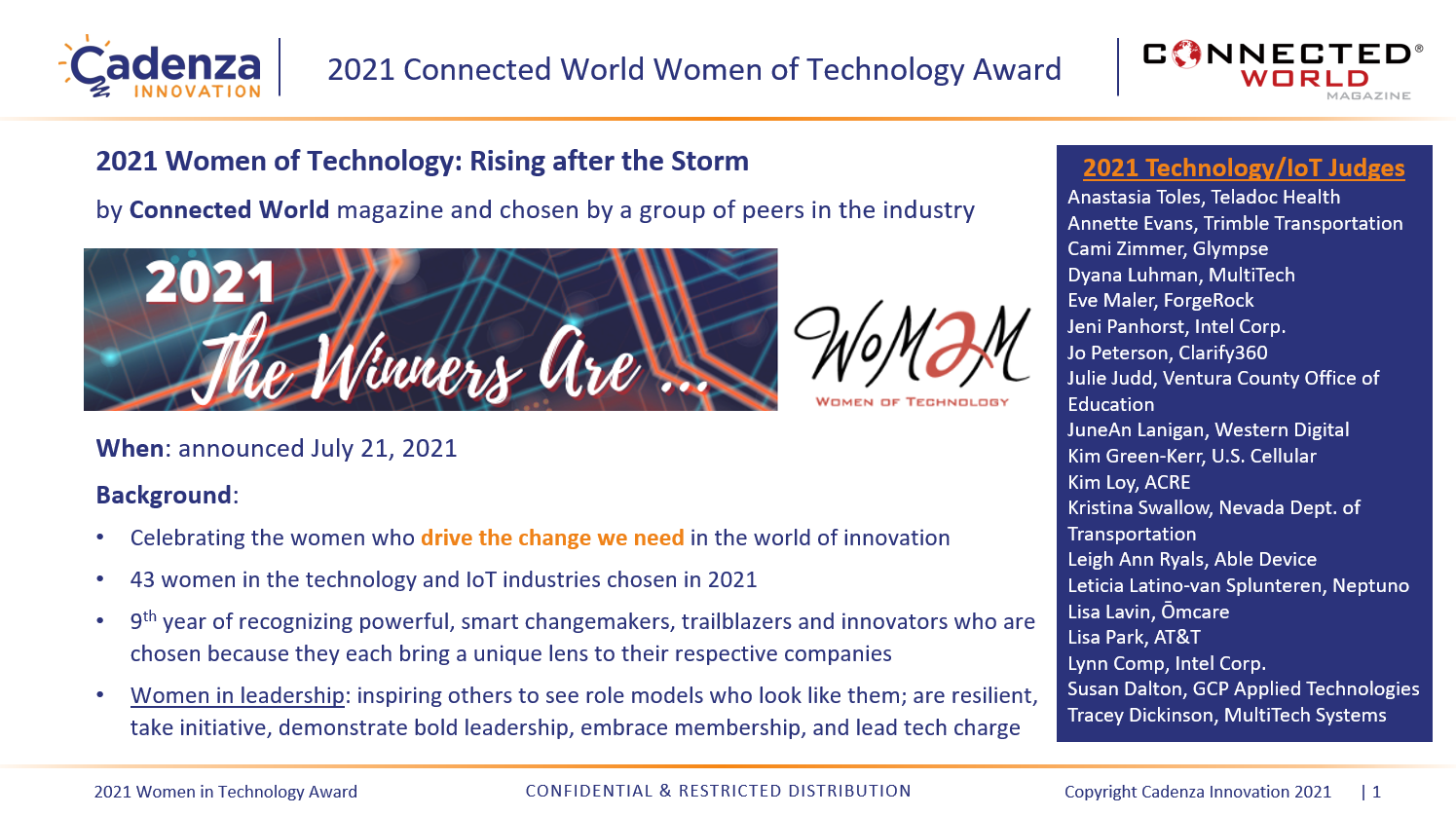2021 Women of Technology: Rising after the Storm
Connected World2021 Women of Technology: Rising after the Storm
The COVID-19 pandemic has reshaped our workforce—in many ways. For one, we have seen women leave the workforce in droves, with some experts suggesting it could be one of the steepest declines in history. Still, this goes deeper than the pandemic. This is only part of a perfect storm that has been brewing in the labor force.
Let’s take a closer look at the state of the market today. The State of the Gender Pay Gap in 2021 from PayScale has some interesting takeaways. For one, women’s role in the labor force participation is at a 33-year low, as more women take on caretaker roles at home due to remote schooling. When women do return to the workforce, they may face the unemployment penalty.
But that is just the beginning. PayScale research also shows the uncontrolled gender pay gap, or opportunity pay gap, which takes the ratio of the median earnings of women to men without controlling for various compensable factors, has decreased by $0.08 since 2015. In 2021, women make only $0.82 for every dollar a man makes, which is one cent more than they made in 2020. But it’s an improvement, for those glass half-full people.
The controlled gender pay gap, which controls job title, years of experience, education, industry, location, and other compensable factors, measures equal pay for equal work. This is a different way of measuring the pay gap. While the uncontrolled gender pay gap measures median earnings, the controlled gender pay gap measures identical jobs. The controlled pay gap has also decreased since 2015, but only by $0.01. Women in the controlled group make $0.98 for every $1.00 a man makes, meaning that women are still making less than men even when doing the exact same job.
The pandemic has also hit certain groups harder than others. According to the BLS (Bureau of Labor Statistics), the unemployment rate for Black or African American in 2020 was at 11.4%. For Hispanics, it was 10.4%. Asian workers, 8.7%. For whites, it was 7.3%. These unemployment rates are often more than double the rates observed in 2019. In almost every group, with the exception of Black or African American males, women have higher unemployment rates than men.
Still, there is an opportunity to continue to examine biases and seek out opportunities to create a more equitable workplace by using the network of women in STEM (science, technology, engineering, and math). Now, more than ever, we need to recognize the women who are moving up the ranks and serving as an influential force in technology.
Enter the Women of Technology awards, which gives the women in leadership a voice, while also allowing others to see role models who look like them. These individuals are resilient, take initiative, demonstrate bold leadership, embrace membership, and are leading the charge in technology—at a time when we need it the most.
Since the list launched, hundreds of women have been recognized for their work in technology and their leadership and inspiration to other women. The Women of Technology Awards list, now in its ninth year, is comprised of powerful, smart changemakers. These women are trailblazers and innovators who are chosen because they each bring a unique lens to their respective companies helping push innovation forward. Each year, Connected World magazine compiles nominations submitted by the industry and researched by the editorial team. Winners are then chosen by a group of their peers within the industry.
This year, a total of 43 women are chosen. Below are the profiles of each of the Connected World Women of Technology. Take some time to learn a little bit about each of them—and how they are driving the change we need in the world of innovation. Let’s celebrate the 2021 Women of Technology together.
Sharon Anderson
Alissa Baier-Lent
Jemma Barbarise
Tanya Berger-Wolf
Mandy Bishop
Graciela Chichilnisky
Katherine Cooke
Keri Speciale Corbin
Manon Den Dunnen
Melissa Drew
Cecilia Flores
Tracy Galloway
JoAnna Garcia Sohovich
Jeanne Holm
Julie Johnson
Cindy Jordan
Jackie Jung
Ann Kelleher
Natalia Klafke
Bernadette Kogler
Stefanie Kondik


